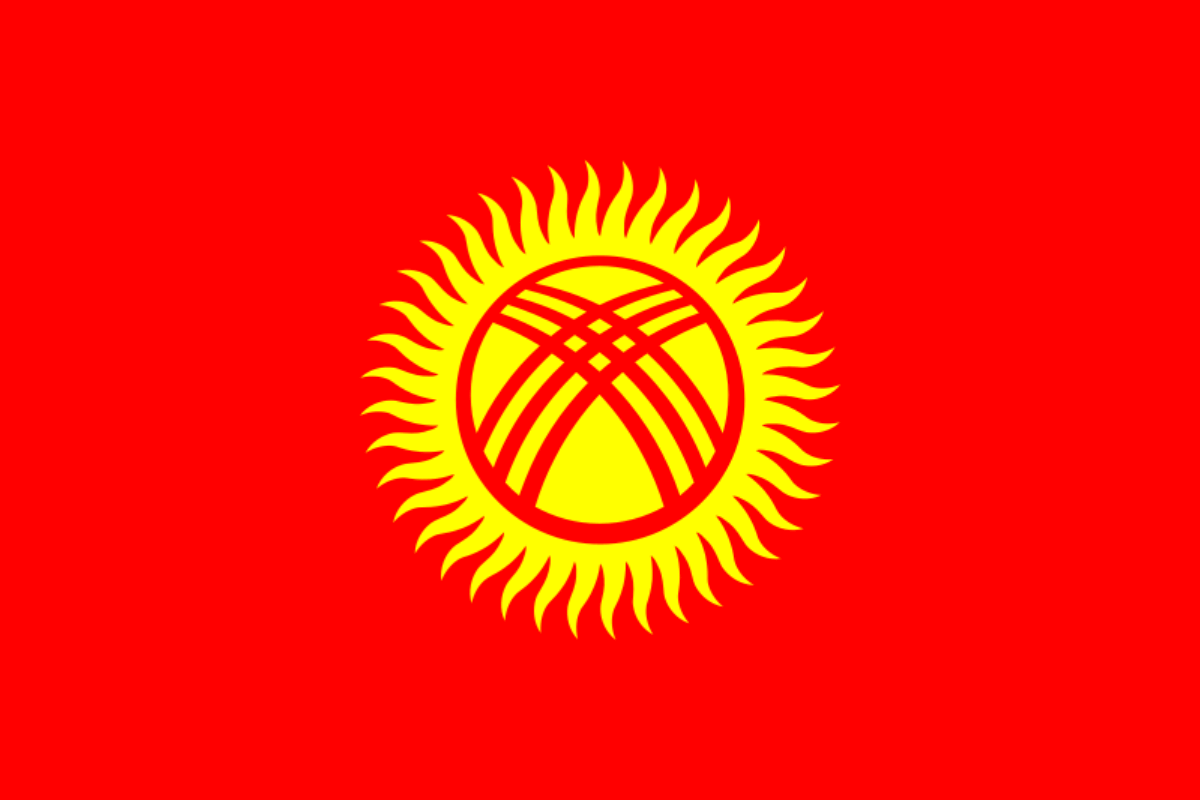The national animal of Kyrgyzstan is the markhor. This is a large Capra species native to much of Central Asia. They are important national symbols in a number of countries including Kyrgyzstan. Their large, spiralling horns have earned them the name screw-horned goat in English. They are among the region’s most iconic fauna.
The markhor is often not an animal that people in the west are familiar with, but it’s hard to forget once you’ve seen it.
They may not have the symbolic charisma of the lion but they are nonetheless among the most important animal in the region both literally and in a more emblematic sense.
Let’s find out more.

What is the national animal of Kyrgyzstan?
The national animal of Kyrgyzstan is the markhor.
This a large species of wild Capra which can be found across Central Asia, though mostly in Pakistan, as well as the Karakoram range and the Himalayas.
They stand anywhere from 26 to 45 inches at the shoulder, and generally are around 50 to 60 inches long.
They can weigh from 70 pounds up to as much as 240 pounds.
Of all extant Capra species, they have the highest shoulder height, though the Siberian ibex is longer and heavier.
They have a light to dark brown coat, which is shorter in the summer and grows a great deal thicker during the colder months.
They are, then, well adapted to a range of environments, able to move around as things get warmer or colder.
There is a considerable degree of sexual dimorphism; males have much longer hair on their chin, throat, and chest.
Females are usually much lighter in color, and they lack the mane of the males.
Both sexes, though, have the iconic, screw-shaped horns.
They are close together at their bases in the head, but separate widely as they go upwards.
The horns of the males, though, are considerably longer than the females, being up to a huge 63 inches in length compared to the 10 inches of the females.
They are known, also, for their particularly pungent smell.
There was widespread belief among various peoples in the past that the markhor would actively hunt snakes, and this is thought to be an association of their long, twisting horns.
Some species of domestic goat have been postulated as direct descendants of the wild markhor, such as the Angora goat.
Their relationship with the domestic goat generally is not entirely determiner, though they are certainly a distinct species.
Why is the markhor the national animal of Kyrgyzstan?
The markhor is the national animal of Kyrgyzstan for a variety of reasons.
They are seen as important symbols of a number of important natural values, on the one hand.
They embody strength and unity, gentle wisdom and subtlety at the same time being emblems of power and courage.
They have long been seen in this way by many peoples that have come into contact with them, and it’s easy to see why.
Their horns look like almost nothing else in nature, aesthetically pleasing almost to the point of being naturally occurring art.
This has made them very important cultural symbols to the people of Kyrgyzstan.
On the other hand, they are more generally seen as among the best embodiments of Kyrgyz natural beauty.
They are the spirits of the mountains, forests, and desert lands that they inhabit, and in this sense they are both beauty personified in themselves, again due to their horns and flowing coats, but also of the natural landscape in Kyrgyzstan.
The question of conservation is also an important matter.
They are presently listed as near threatened, and so the Kyrgyz government hopes to bring attention to potential threats they may face in the future.
Which country has the most markhor?
The markhor is heavily associated with Pakistan, and so unsurprisingly this is where the largest numbers of the animals are found.
The single largest population resides in Pakistan’s Chitral National Park, where there are currently more than a thousand.
It’s estimated that there are around five to six thousand total markhor in the world today, with the vast majority being in Pakistan.
That said, they are widely distributed though their population numbers have been steadily decreasing over the last decade or so.
Markhor, though, are far from an uncommon sight in the wilds of Kyrgyzstan.
Where do markhor live?
They are best adapted to mountainous terrain and are most commonly found at fairly high elevations.
There’s a considerable range in the elevations they can be found at, though; anywhere from 2,000 to 11,800 feet.
They mostly inhabit scrub forests made up of oak trees, pine trees, and juniper bushes.
Being mostly diurnal, they are well adapted to the heat of these environments yet at the same time residing at higher elevations helps them to escape the worst of the heat.
They will shift their diet seasonally and so they can move around quite a lot depending on whatever food sources are most readily available.
So, again, the markhor may not be the most internationally known animal, but to see one is to see a sight you will never forget.
Their horns are huge and spiral like something more out of a human sculpture than from nature.
They are of huge spiritual and emblematic importance to the people of Kyrgyzstan and have been for a very long time, and no doubt will continue to be long into the future.

